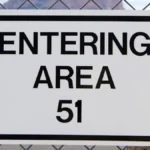
Welcome to our journey through Florence, a city renowned for its breathtaking beauty and rich history! Often celebrated as the birthplace of the Renaissance, Florence is a vibrant hub of art, culture, and innovation. In this blog post, we’ll uncover 18 interesting facts about Florence that highlight its remarkable contributions to the world and its enduring legacy. From its iconic landmarks to the influential figures who have walked its streets, these intriguing tidbits will spark your curiosity and deepen your appreciation for this extraordinary city. Join us as we explore the captivating stories and hidden gems that make Florence a must-visit destination!
Inventions: Bartolomeo Cristofori, a skilled instrument maker, invented the piano in Florence around the year 1700, revolutionizing music with this new keyboard instrument that allowed for dynamic expression. Florence was also the birthplace of several other significant inventions, including the telescope in 1609, which Galileo Galilei famously used to observe celestial bodies. The modern chain, developed in the 1400s, improved various mechanical devices, while the invention of eyeglasses enhanced vision for many. Renaissance perspective, a technique that transformed art by creating the illusion of depth, emerged from this vibrant cultural hub. Early designs for parachutes and the mechanical clock, which first appeared in the 14th century, further exemplify Florence’s innovative spirit during the Renaissance.
House of Gucci: In 1921, Guccio Gucci established the House of Gucci in Florence, a brand that would become synonymous with luxury and fine leather craftsmanship. The city’s long-standing tradition of leatherwork, which dates back centuries, provided the perfect backdrop for Gucci’s vision. The brand quickly gained a reputation for high-quality products, including handbags, shoes, and accessories, which showcased the artisanal skills of Florentine craftsmen. Over the years, Gucci has evolved into a global luxury powerhouse, but its roots in Florence remain a point of pride, reflecting the city’s rich heritage in fashion and design.
Tourism: Florence attracts over 15 million tourists each year, drawn by its rich history, stunning architecture, and world-renowned art. Visitors flock to the city’s historic center, which is a UNESCO World Heritage Site, to experience its treasures firsthand. Iconic landmarks such as the Uffizi Gallery, home to masterpieces by Botticelli and Michelangelo, and the Ponte Vecchio, a medieval stone bridge lined with shops, are must-see attractions. The influx of tourists significantly contributes to Florence’s economy, allowing the city to maintain its cultural heritage while also facing challenges related to over-tourism.
Cultural Giants: Florence is often regarded as the cradle of the Renaissance, producing some of history’s most influential figures. Notable residents include Leonardo da Vinci, whose innovations spanned art and science; Michelangelo, celebrated for his sculptures and the Sistine Chapel ceiling; and Dante Alighieri, the father of the Italian language and author of “The Divine Comedy.” The Medici family, powerful patrons of the arts, played a crucial role in nurturing these talents, fostering an environment where creativity thrived. Their legacy continues to shape Florence’s cultural landscape today.
Population: Florence is Italy’s 8th largest city by population, following major urban centers like Rome and Milan. With a population of approximately 380,000 residents, Florence is a vibrant city that balances its historical significance with modern urban life. The city’s size allows it to maintain a close-knit community atmosphere while also being a cultural and economic hub in Tuscany. Its historical architecture and artistic heritage attract not only tourists but also new residents who wish to experience its unique charm.
Capital of Italy: From 1865 to 1871, Florence served as the capital of Italy during a pivotal period of unification. This era marked significant political and cultural transformation in the country. The decision to establish Florence as the capital was influenced by its historical importance and central location. During this time, many government buildings and institutions were established, contributing to the city’s development. Although the capital was later moved to Rome, Florence’s brief status as the capital left a lasting impact on its infrastructure and cultural landscape.
Stendhal Syndrome: Stendhal Syndrome is a psychological phenomenon named after the French author Stendhal, who described experiencing intense emotions and physical symptoms when exposed to the beauty of Florence’s art. This condition reflects the overwhelming impact of the city’s artistic treasures, such as the works of Michelangelo and Botticelli. Visitors may experience feelings of dizziness, rapid heartbeat, or even fainting when confronted with the sheer beauty of Florence’s museums and architecture, highlighting the profound effect that art can have on the human psyche.
Statue of David: The Statue of David, one of Michelangelo’s most famous masterpieces, has an intriguing backstory. A block of marble sat unused in a Florence churchyard for 25 years after two artists abandoned it due to its imperfections. Michelangelo saw potential in the flawed stone and transformed it into the iconic statue, which was completed in 1504. Standing at 17 feet tall, David symbolizes the Renaissance’s ideals of human beauty and strength. Today, it resides in the Accademia Gallery, where it continues to attract millions of admirers each year.
Lost Masterpiece: Scholars believe that a lost masterpiece by Leonardo da Vinci, titled “The Battle of Anghiari,” may be hidden behind a wall in Florence’s town hall, known as the Palazzo Vecchio. This painting, which depicts a fierce battle scene, was believed to have been created in the early 1500s. However, a subsequent fresco by Giorgio Vasari was painted over it, obscuring da Vinci’s work. Over the years, art historians and archaeologists have speculated about the existence of the original painting, and various investigations have been undertaken to uncover it. The ongoing mystery surrounding “The Battle of Anghiari” reflects the enduring fascination with Leonardo da Vinci’s genius and the rich artistic heritage of Florence.
Ponte Vecchio: The Ponte Vecchio, built in 1218 and reconstructed in 1345, is the only bridge in Florence that survived World War II, a testament to its historical significance and beauty. Adolf Hitler reportedly ordered that the bridge be spared during the bombings because of its aesthetic appeal. The bridge is renowned for its unique architecture, featuring a series of shops that line both sides, primarily selling jewelry and art. Its design exemplifies the harmony and proportion characteristic of Renaissance architecture, making it one of Florence’s most photographed landmarks and a symbol of the city’s resilience.
Florence Cathedral: The Florence Cathedral, officially known as the Cattedrale di Santa Maria del Fiore, boasts the largest brick dome in the world, a remarkable feat of engineering completed in 1436. Designed by Filippo Brunelleschi, the dome remains an architectural marvel, showcasing innovative techniques that allowed for its immense size without the need for external buttresses. The cathedral itself is adorned with intricate artworks and sculptures, and its stunning façade is a blend of pink, green, and white marble. As a focal point of the city, the cathedral attracts countless visitors who come to admire its grandeur and climb to the top for panoramic views of Florence.
Origin of Opera: The origins of opera can be traced back to Florence in 1597 with the performance of Jacopo Peri’s “Dafne,” which is considered the first opera ever composed. This new art form combined music, drama, and elaborate staging, captivating audiences and paving the way for future developments in theatrical music. The Florentine Camerata, a group of intellectuals and musicians, played a crucial role in the creation of opera by seeking to revive the ancient Greek theatrical traditions. Today, Florence continues to honor its operatic heritage with performances at historic venues, including the Teatro della Pergola.
Symbol of Florence: Since the 11th century, the symbol of Florence has been a lily, known as the “Florentine lily” or “giglio.” This emblem represents the city’s rich history and its connection to the Medici family, who adopted the lily as part of their coat of arms. The lily is often associated with purity and beauty, reflecting the cultural and artistic achievements of Florence. It can be found throughout the city, from flags to architectural decorations, serving as a reminder of Florence’s identity and its significance in Italian history.
Badia Fiorentina: The Badia Fiorentina, built in 978, is the oldest church in Florence and holds a special place in the city’s history. It is said to be the location where Dante Alighieri first laid eyes on Beatrice, the muse who inspired much of his poetry. The church features stunning Romanesque architecture and has undergone various renovations over the centuries. Today, it serves as a testament to Florence’s rich ecclesiastical history and continues to be an active place of worship, as well as a site of cultural interest for visitors.
Black Death: In 1339, the Black Death swept through Florence, claiming the lives of approximately half of the city’s population. This devastating plague had profound social and economic effects, leading to labor shortages and shifts in power dynamics. The aftermath of the Black Death also influenced art and literature, as themes of mortality and the human condition became prevalent. Florence’s recovery from this tragedy was marked by a resurgence in art and culture, ultimately contributing to the flourishing of the Renaissance in the following decades.
Museo Salvatore Ferragamo: The Museo Salvatore Ferragamo, located in Florence, houses an impressive collection of over 10,000 privately commissioned shoes, showcasing the creativity and craftsmanship of the iconic shoemaker. Founded by Salvatore Ferragamo in the early 20th century, the museum features shoes made from unique materials, including dyed fish skin, and highlights the evolution of footwear design. The museum not only celebrates Ferragamo’s legacy but also serves as a tribute to the artistry of shoe-making, attracting fashion enthusiasts and tourists alike.
Laurentian Library: The Laurentian Library, designed by Michelangelo, is an architectural masterpiece located in Florence. Completed in the 16th century, it houses thousands of rare manuscripts and books, making it one of the most important libraries in Italy. The library is renowned for its stunning interior, which features a grand staircase and intricately designed reading rooms that reflect Michelangelo’s innovative approach to space and light. The design combines functionality with artistic beauty, showcasing the Renaissance ideals of harmony and proportion. Visitors to the Laurentian Library can explore its vast collection, which includes works from various fields, and appreciate the architectural genius of Michelangelo, making it a significant cultural destination in Florence.
Il Duomo’s Architect: The dome of the Florence Cathedral, known as Il Duomo, was designed by Filippo Brunelleschi, who, remarkably, had no formal architectural training prior to this monumental task. Completed in 1436, the dome is a marvel of engineering, standing at a height of 114.5 meters (376 feet) and made primarily of bricks and mortar. Brunelleschi’s innovative techniques, including the use of a double-shell structure and herringbone brick pattern, allowed for its construction without scaffolding. His work on the dome not only transformed the skyline of Florence but also set a precedent for future architectural endeavors, solidifying his legacy as one of the great pioneers of Renaissance architecture.
Frequently Asked Questions about Florence:
1. What is Florence known for?
Florence is known for its rich history, stunning art, and architecture. It is often referred to as the birthplace of the Renaissance, home to masterpieces by artists such as Leonardo da Vinci, Michelangelo, and Botticelli. Key attractions include the Florence Cathedral (Duomo), the Uffizi Gallery, and the Ponte Vecchio. The city is also famous for its contributions to literature, philosophy, and science.
2. When is the best time to visit Florence?
The best times to visit Florence are during the spring (April to June) and fall (September to October) when the weather is mild, and the crowds are smaller compared to the summer months. These seasons offer pleasant temperatures for exploring the city and enjoying outdoor activities.
3. How do I get around Florence?
Florence is a walkable city, and many of its main attractions are located within a short distance from each other. Walking is often the best way to experience the city’s charm. Public transportation, including buses and trams, is available, but many visitors find that renting a bike or using electric scooters can be a fun alternative. Taxis and rideshare services are also options.
4. What are the must-see attractions in Florence?
Some must-see attractions in Florence include:
- Florence Cathedral (Duomo): Known for its stunning dome designed by Brunelleschi.
- Uffizi Gallery: One of the most famous art museums in the world, housing works by Botticelli, Michelangelo, and more.
- Ponte Vecchio: A historic bridge lined with shops, famous for its picturesque views.
- Palazzo Vecchio: The town hall of Florence, rich in history and art.
- Accademia Gallery: Home to Michelangelo’s iconic statue of David.
5. What local dishes should I try in Florence?
Florence offers a variety of delicious local dishes, including:
- Bistecca alla Fiorentina: A thick, grilled T-bone steak, typically sourced from local Chianina cattle.
- Ribollita: A hearty Tuscan soup made with bread, beans, and seasonal vegetables.
- Pici Cacio e Pepe: Hand-rolled pasta served with cheese and pepper.
- Lampredotto: A traditional street food made from the fourth stomach of a cow, often served in a sandwich.
6. Is Florence a safe city for tourists?
Florence is generally considered a safe city for tourists. However, like in any major city, it’s important to remain vigilant about your belongings, especially in crowded areas where pickpocketing can occur. It’s advisable to keep valuables secure and be aware of your surroundings.
7. What is the currency used in Florence?
The currency used in Florence, as in the rest of Italy, is the Euro (€). Credit and debit cards are widely accepted, but it’s a good idea to carry some cash for smaller purchases or in case you visit places that do not accept cards.
8. How can I learn about the history of Florence?
To learn about Florence’s history, consider visiting local museums, historical sites, and guided tours. Many museums offer audio guides or guided tours in multiple languages. Additionally, books and documentaries about the Renaissance and Florence’s history can provide valuable insights.
9. What are some day trips from Florence?
Florence is well-located for several day trips, including:
- Pisa: Famous for the Leaning Tower and other historical sites.
- Siena: Known for its medieval architecture and the Palio horse race.
- San Gimignano: Renowned for its medieval towers and beautiful countryside.
- Chianti: A picturesque region famous for its vineyards and wine tasting.
10. What is the dress code for visiting churches in Florence?
When visiting churches in Florence, it’s important to dress modestly. This typically means covering shoulders and knees. Some churches may provide wraps or shawls for visitors who do not meet the dress code, but it’s best to come prepared.









